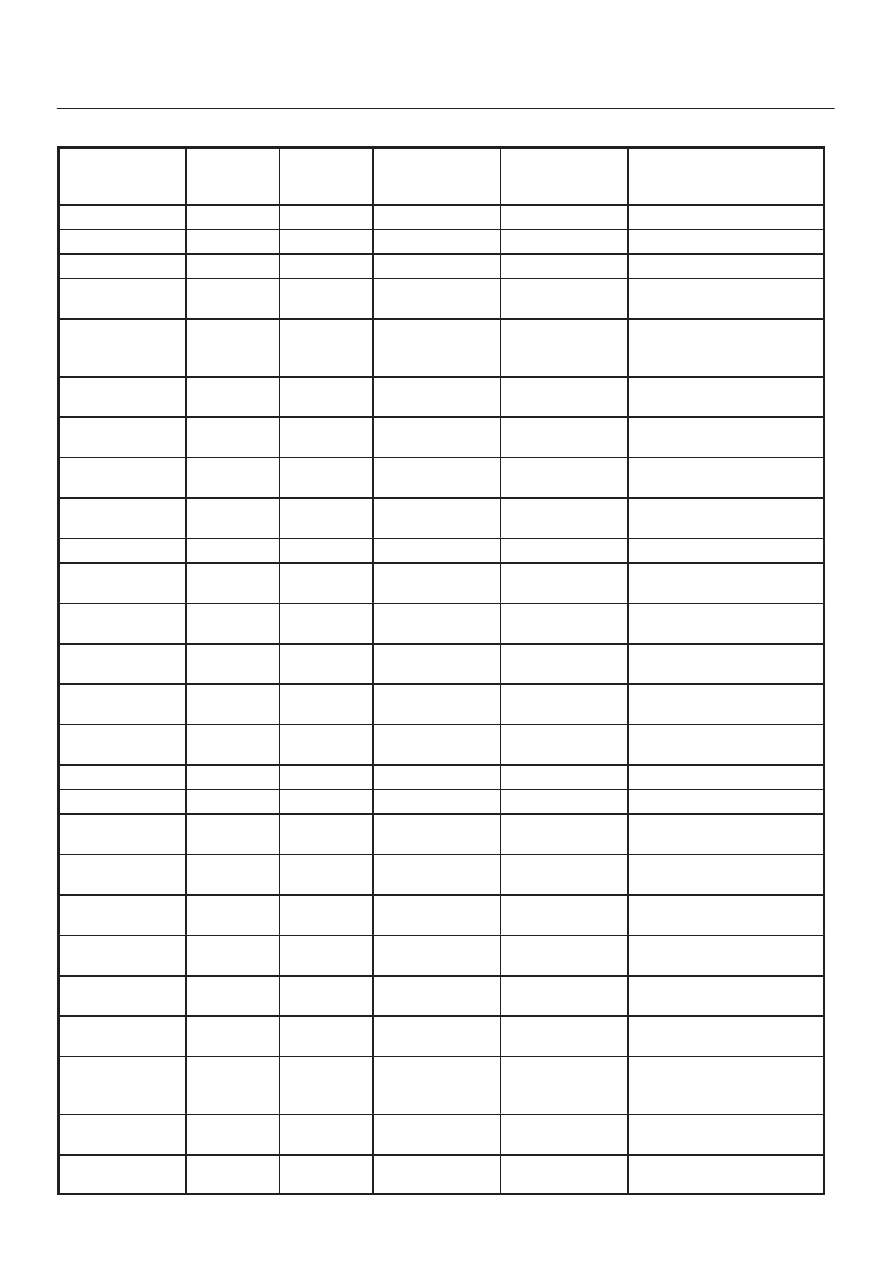Opel Frontera UBS. Manual - part 478

6E–42
4JX1–TC ENGINE DRIVEABILITY AND EMISSIONS
4JX1-TC Engine (Automatic and Manual Transmission)
Tech 2
Parameter
Data List
Units
Displayed
Typical Data
Values (IDLE)
Typical Data
Values
(2500 RPM)
Refer To
Battery Voltage
Engine
Volts
12.5
∼
14.5
13
∼
15
General Description
Ignition Status
Engine
On/Off
On
On
General Description
Ignition Relay
2
Engine
On/Off
On
On
General Description
Idle Switch
Engine
Inactive/
Active
—
—
DTC P0510, P1510
Manifold
Absolute
Pressure
Engine
KPa
96
∼
106
110
∼
150
General Description
DTC P0107, P0108
Rail Oil
Pressure
Engine
MPa
3.5
∼
5
4.5
∼
10
General Description
DTC P0192, P0193
Desired Rail Oil
Pressure
Engine
MPa
4
∼
5
5
∼
9
General Description
DTC P0192, P0193
Fuel
Temperature
Engine
°
C (
°
F)
75
∼
85
75
∼
85
DTC P0182, P0183
Quick Warming
Switch
Engine
On/Off
Off
Off
DTC P0380
Thermo Relay
Engine
On/Off
—
—
DTC P1655
Actual EGR
Pressure
Engine
KPa
58
∼
60
M/T 63
∼
66
A/T 95
∼
105
DTC P0405, P0406
Barometric
Pressure
Engine
KPa
98
∼
102
98
∼
102
General Description
Relative EGR
Pressure
Engine
KPa
–38
∼
–45
M/T –34
∼
–37
A/T 0
General Description
Desired EGR
Pressure
Engine
KPa
–43
∼
–40
M/T 36
A/T 0
General Description
Brake Switch
Engine
Inactive/
Active
—
—
DTC P1588
Gear
Engine
—
—
—
—
Vehicle Speed
Engine
Km/h
0
0
Transmission Diagnosis
Rail Pressure
Control Valve
Engine
%
17
∼
22
18
∼
27
DTC P1193
EGR Status
Engine
Disable/
Enable
Enable
M/T Enable
A/T Disable
General Description
EGR Switching
Valve
Engine
On/Off
—
—
General Description
Throttle Motor
Position Sensor
Engine
Volts
3.1
∼
3.9
0.2
∼
0.9
DTC P1485, P1486,
P1487
Throttle Motor
Position
Engine
Steps
0
∼
1.0
0
∼
1.0
DTC P1488
Delirered Fuel
Quantity
Engine
mm 3/st
6
∼
10
6
∼
12
General Description
Injector Status
Engine
Disable/
Enable
Enable
Enable
DTC P0201, P0202,
P0203, P0204, General
Description
Injector Pulse
Width
Engine
ms
0.9
∼
1.25
0.7
∼
1.1
General Description
Injector Start
Offset
Engine
°
CA
—
—
General Description